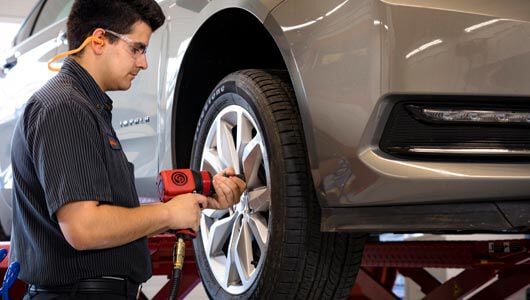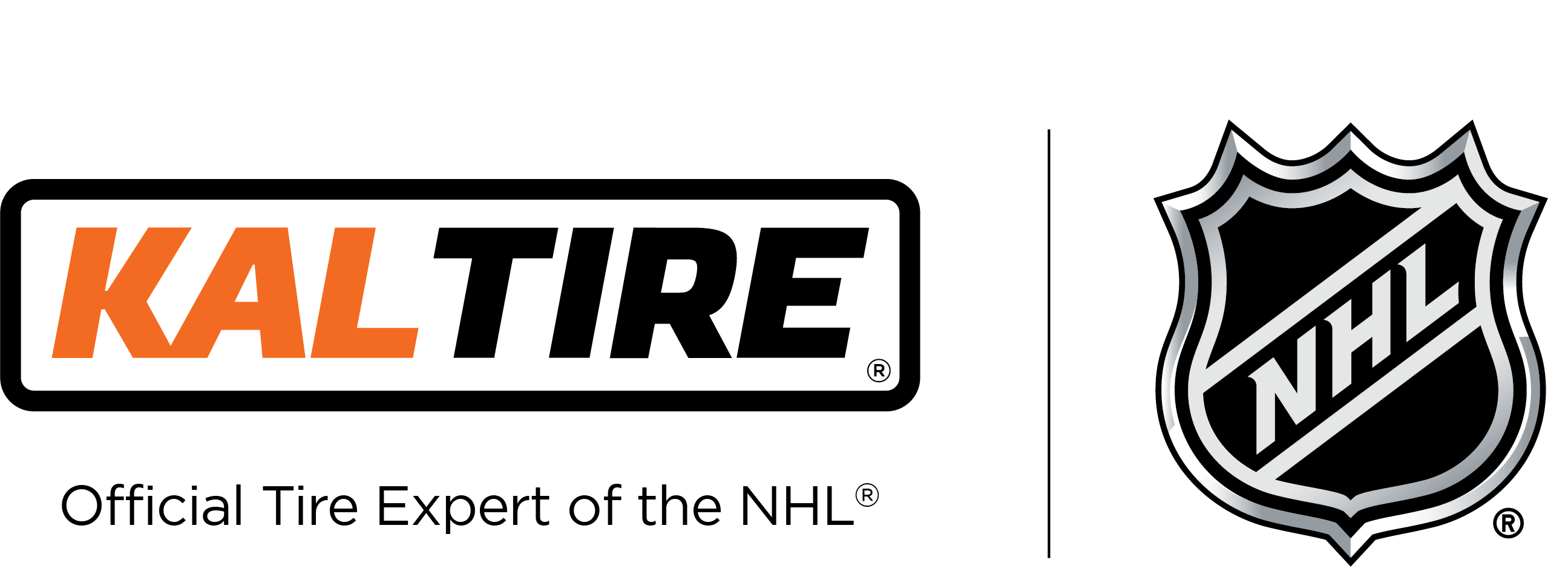When should you rotate AWD tires?

With Canada’s unpredictable winter weather conditions, drivers have come to appreciate the added traction and safety of All-wheel drive (AWD) vehicles. To get the best performance, do you know when to rotate AWD tires?
There’s a common misconception that tire rotation isn’t necessary for AWD vehicles. Some think that since AWD systems constantly deliver power to all four tires, the tires are all wearing at the same rate.
However regular tire maintenance, including tire rotations, is important for all-wheel drive vehicles—in part because different auto manufacturers have developed several variations of AWD systems.
AWD SYSTEMS: Why you still need to rotate AWD tires
Part-time: In normal driving conditions, one axle receives power. In slippery conditions, the driver can engage the other axle with the press of a button (or lever).
Full-time: All wheels are powered at all times.
On-demand: Vehicle sensors detect slippery road conditions, and automatically deliver power to the other axle until normal road conditions resume.
No matter which AWD system your vehicle has, each wheel position will experience a different degree of steering, weight dispersion and traction. When tires are allowed to run on every wheel position, they wear out more uniformly, decreasing the chance of irregular wear.
Benefits of rotating tires on AWD vehicles
Next to checking tire pressure, proper rotation is the second-most important maintenance item for any vehicle, including AWD’s. That’s because tire rotations:
- Prevent uneven wear
- Maximize tire life
- Improve traction, handling and road noise
When your tires are in peak condition, you enjoy smooth, safe driving as well as savings with long-lasting tires.
Ensuring that all four tires are as uniform as possible puts less stress on the components of your AWD system. If the difference in diameter between two tires on the same axle is off by even 1/16 of an inch, it’ll mean one tire is spinning at a substantially different rate than its partner. This can cause the AWD system extra stress, and possibly result in failure.
How should AWD tires be rotated?
Best practice is to rotate your tires every 8,000-10,000 kilometres, or every other oil change. For rear-wheel drive or AWD/4WD, the rotation pattern goes as follows:
- Left rear goes to right front
- Right rear goes to the left front
- Right front goes to left rear
- Left front goes to the right rear
If you have a full-size spare tire, it should be added to your regular rotations. Keeping the spare tire’s tread equal with the others in an AWD or 4WD will prevent damage to the driveline (the mechanism that sends power from the engine to your wheels).








